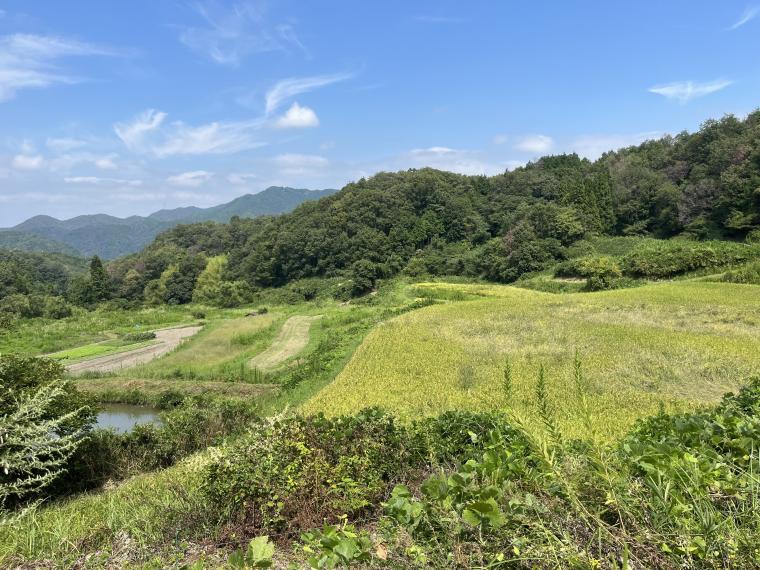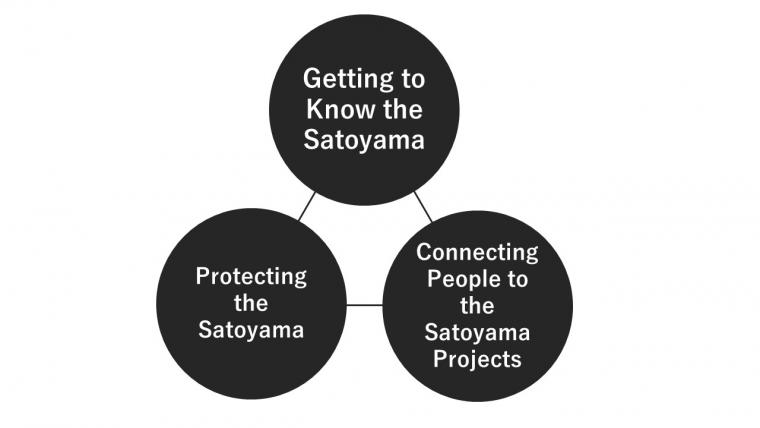KOBE Satoyama Biodiversity Strategy
最終更新日:2025年7月15日
ページID:80228
ここから本文です。

What is Satoyama?
While Kobe is a major city of 1.5 million, which developed around one of Japan’s first and most active international trade ports,
it is also home to many areas of rich nature, known as satoyama. This term refers to natural environments that have been
sustainably used, maintained, and protected by local residents through traditional agricultural practices. These include the
management of rice paddies, fields, irrigation channels, ponds, streams and grasslands, as well as the use of trees for timber and fuel.
Because of this, satoyama areas now constitute a mosaic of diverse environments, rich in biodiversity.
Challenges
Due to various changes in the socio-economic landscape, however, people no longer use the resources offered by the satoyama areas
to the same extent as before. Because of this, we now see an increase in the number of abandoned farms, poorly maintained forests,
overgrown thickets and bamboo groves. Many waterways and farm ponds are also no longer managed in an appropriate way.
In addition to this, we also see an increase in the number of invasive alien species, all of which leads to the loss of biodiversity in
these areas. Thus, once common animals, such as the Japanese pond turtles, red dragonflies and medaka fish, as well as plants like
the balloon flower and field fleawort are now hard to come across.
Goals
We envision the ideal state of the satoyama areas as one, where a rich variety of plants and animals can thrive; the value of a
harmonious relationship between people and nature is widely shared; and conservation, management, and sustainable use are
practiced in a continuous manner, allowing us to enjoy the many benefits of biodiversity for generations to come.
Three Pillars

Getting to Know the Satoyama
- Promoting the appeal of the areas
- Raising awareness about biodiversity
- Raising awareness about issues of invasive species and wild animals
Protecting the Satoyama
- Promoting initiatives to achieve the 30-by-30 target
- Wildlife monitoring
- Conservation of forests, farmlands and grasslands
- Measures against invasive species and wild animals
Connecting People to the Satoyama Projects
- Circular use of satoyama resources
- Personnel development
- Activities support
- Achieving carbon neutrality
- Connecting people engaged in conservation activities
Brochure
KOBE Satoyama Biodiversity Strategy(PDF:2,693KB)
よく見られているページ
- 外来生物とは?
- 希少野生動植物種・指定外来種
- 神戸市生物多様性の保全に関する条例に基づく開発事業に関する届出
- 生物多様性神戸プラン推進委員会
- きせつの生きものさがし
- 自然環境保全活動支援事業
- 特定外来生物「オオキンケイギク」
- 神戸版レッドデータ
- 特定外来生物「ツヤハダゴマダラカミキリ」
- 特定外来生物「クビアカツヤカミキリ」
- 特定外来生物「ヒアリ」「アカカミアリ」
- 特定外来生物「アルゼンチンアリ」
- 里地里山の生物多様性
- マムシ・ヤマカガシ(毒ヘビ)にご注意!
- KOBE里山生物多様性戦略
- 明石川生物図鑑
- 環境DNA分析による海域魚類調査
- 条件付特定外来生物(アカミミガメ、アメリカザリガニ)
- 生物多様性フォーラムの開催「神戸と明石の自然を守り育てるために」
- 夏休み!生きものクエスト結果発表
- スマホアプリを利用した夏の生きもの調査
- 生物多様性豊かなビオトープ推進事業
- 夏休み!生きものクエスト結果発表2024
- 外来生物のLINEでの通報が始まります
- KOBE Satoyama Biodiversity Strategy
- 特定外来生物「ナガエツルノゲイトウ」
- 「生物多様性神戸プラン」改定案の意見募集
- 「神戸版レッドリスト及びブラックリスト」改訂案の意見募集
- 生物多様性神戸プランに関する意見送信フォーム
- 「神戸版レッドリスト及びブラックリスト」改訂案の意見送信フォーム
